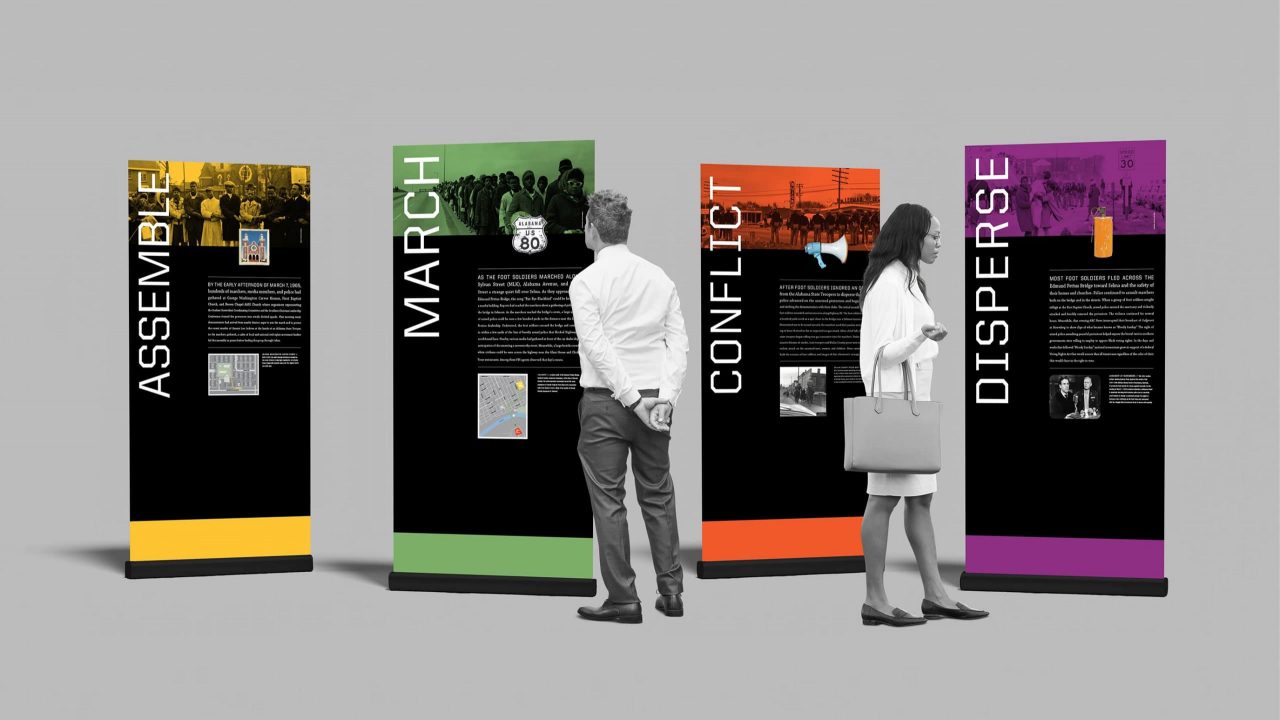SIGD’s Robert Finkel Lends Design Expertise to Bloody Sunday Research Team

Robert Finkel, Associate Professor and Chair of the Graphic Design program in the School of Industrial and Graphic Design (SIGD), has brought his expertise to an ongoing research project in the College of Architecture, Design and Construction (CADC). The research team recently received several grants that support incorporating Finkel’s design expertise in documenting the history of Bloody Sunday, the 1965 march in Selma, Alabama, where civil rights marchers were attacked during a peaceful protest on the Edmund Pettus Bridge.
Bloody Sunday was a catalyst for Americans to rally behind the civil rights movements. For the past few years, CADC faculty members Richard Burt and Junshan Liu have worked with Keith Hebert and Elijah Gaddis of Auburn’s College of Liberal Arts and Georgia Tech Assistant Professor Danielle Willkens to preserve this important piece of history. They have documented the areas around the Edmund Pettus Bridge by using historical photos and video footage, photogrammetry software, laser scanners, drones and design concepts and technology to survey and map the area where the confrontation occurred. They continue to make major breakthroughs in setting the scene from the fateful day and identifying the roughly 600 Bloody Sunday Foot Soldiers who participated. Having collected a great deal of data they wanted to share with the public, they knew they needed to establish a comprehensive visual communication strategy to be implemented across media, so they approached Finkel and asked him to collaborate with them. “I believe this is the value that graphic designers can bring to a project of this level of complexity: clarity to the raw data, the development of a logical narrative and the communication of information and emotion through the combination of verbal and visual graphics,” Finkel explained.
Finkel is leading an effort to develop a website prototype that will be a comprehensive source for all things related to the research. The development of the website prototype is being supported by a $10,000 grant, awarded this past summer, from Auburn’s Office of Inclusion and Diversity. The website will include a virtual tour of the conflict site, archival photos and interpretive content. The team was also awarded a $15,000 Alabama Humanities Alliance Media Grant to hire a web developer to implement the website design and a graduate student in history to organize and caption all interpretive content and artifacts embedded in the virtual tour. The website will allow users to enlarge individual images to reveal the names of those identified or to solicit information on those who have not yet been identified. The goal is to eventually allow visitors to the Edmund Pettus Bridge to access the site on their mobile phones and utilize it as a self-guided interpretive tour. Finkel hopes that future funds will allow for on-site signage and physical exhibits as well. “Our goal is to have the website become the definitive source that tells the story of Selma’s Bloody Sunday through evidence-based research,” Finkel stated. “It will be fully launched by spring 2025 in coordination with the 60th anniversary of that day’s events.”
In addition to his work on the website, Finkel has also designed the Selma Bloody Sunday Foot Soldiers Traveling Exhibit. The traveling exhibition made its debut at the Selma Bridge Crossing Jubilee this past March and is currently on display at Selma University. The objective of the exhibit is to encourage public engagement with the existing research and to solicit information that will help identify more of the marchers. Finkel’s design divides the narrative into four sections: the assembly of the marchers and press, the march through downtown Selma and over the bridge, the conflict between marchers and law enforcement and the subsequent dispersement of marchers as Alabama State Troopers chased them back across the bridge. The exhibition tells the story of that day through these four stages with freestanding panels and waist-high reader rails that provide images, anecdotes and contextual information collected from research. He designed the color palette to start off with energy and hope that later transitions into more urgent and somber hues. He was named a runner up for his design work on this exhibit by the design journal Creative Quarterly, Issue 72, and also received an Award of Excellence in the University & College Designers Association’s annual competition in the Environmental Graphics category. Finkel’s personal website offers a detailed explanation of how he researched and designed the exhibit.
Related people:
Robert Finkel,
Richard Burt,
Junshan Liu